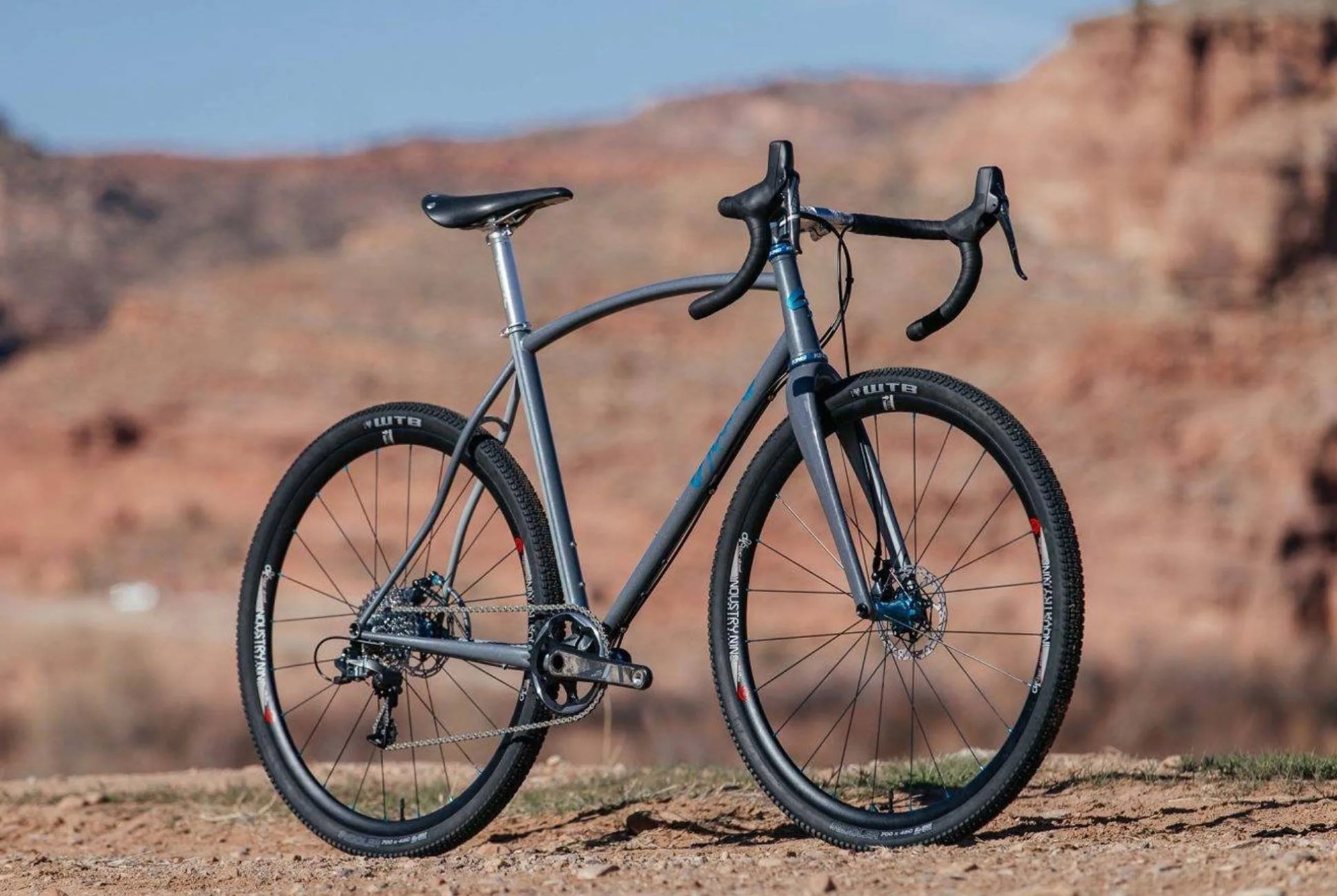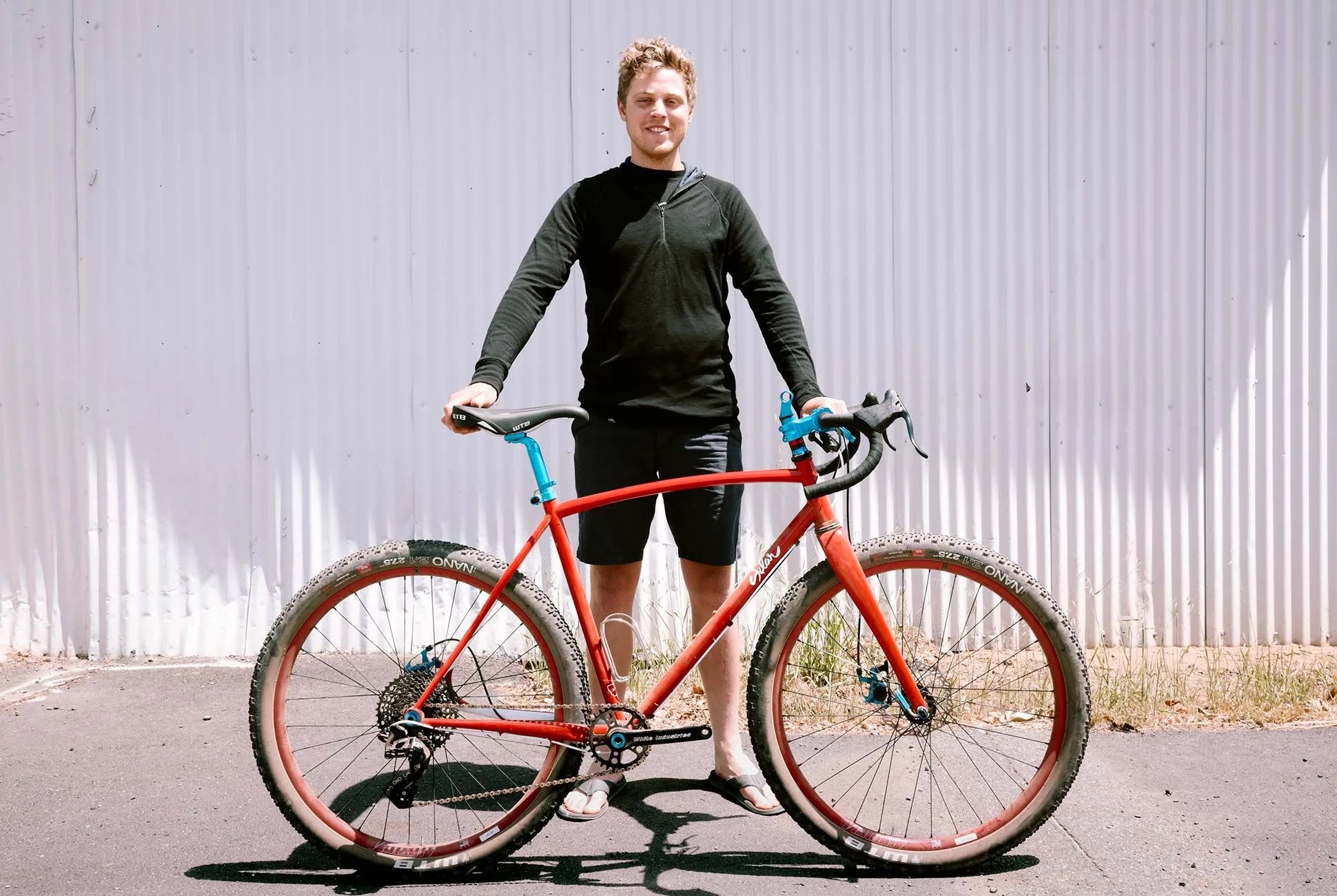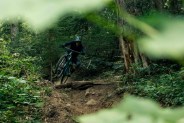Adam Sklar first crossed our radar at the North American Handmade Bike Show, where his split-pea green rigid mountain bike took home a best in show award. Sklar, 24, is based in Bozeman, Montana, where he has quite the following. But even outside Bozeman, Sklar is making a name for himself in the custom mountain bike industry. His bikes have a distinct silhouette and aesthetic that is instantly recognizable. He specializes in steel hardtail mountain bikes, but has recently been making a lot of “monstercross” bikes — a hybrid between a cross bike and a hardtail mountain bike. We caught up with Sklar at Paul Components in Chico, California to see how he got started, what drives his creativity and what’s next for the brand.
Q: How did you first get started building bikes?
A: I was in high school and I was racing mountain bikes. I was building a bike for myself and I couldn’t find a fork to fit the frame I bought. So I went to a local builder. People told me “Oh, you should go to this guy. He makes forks.” Up until then, I hadn’t really thought about how bikes were made or anything. Then I walked into his shop and I was like “Woah! There are all these cool machines.” Because I’d always been into making stuff. I walked in as he was finishing up my fork because I couldn’t wait to get it painted.
I thought about that for a while. Then a year later I was talking to a friend and he said: “you should build a bike.” From there, I hacked it all together. After a while of doing that I made some bikes that worked and some that didn’t work so well. Then I started reaching out to mentors. Karl Strong has been super helpful. He’s built thousands and thousands of bikes. I wouldn’t be doing it for a living if it wasn’t for him.
Q: Curvy tubes are kind of your signature. Where did that come from?
A: I think it looks cool. One friend asked for it once and I was really hesitant to do it. But then some one else asked for one, and then another, and then another.

Q: You’ve been making a lot of cross and monstercross bikes lately. What is driving that?
A: I wasn’t really into cross bikes until I moved to Montana. That’s definitely played a big part. In the springtime when the trails aren’t dried out, you can ride all of the dirt roads — it’s better than not riding. I had a cross bike and it was sitting in the garage all summer and I felt bad about not riding it, so we started riding up roads and we’d be like “oh there’s a trail let’s see what that’s like.” We started riding cross bikes on trails — that’s definitely been a big influence on the geometry of [the monstercross]. It’s not a mountain bike with drop bars and it’s not a cross bike with big tires. It’s designed right around that. It lends itself well to either discipline.
Q: What was the biggest challenge in designing the monstercross bike?
A: Fitting the drivetrain with the giant tires. Which isn’t too bad. I do a lot of plus mountain bikes. The fork was also a constraint. I’ve been liking carbon forks more — I think they complement steel bikes well. It’s nice that the ENVE fork fits up to a 2.1, but it’s a bit of a constraint. I build a lot of my forks because it gives you a whole bunch more freedom on how the bike handles and fits.

